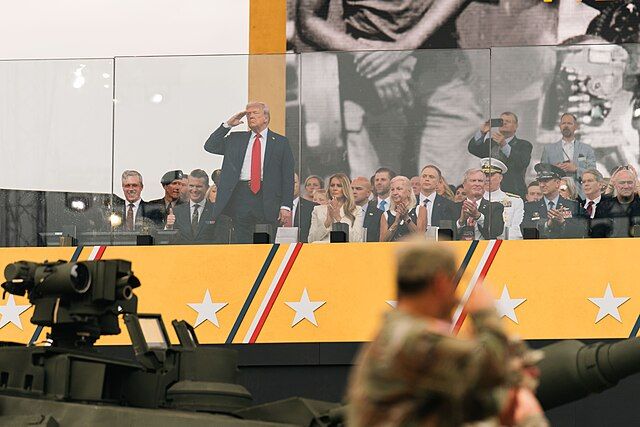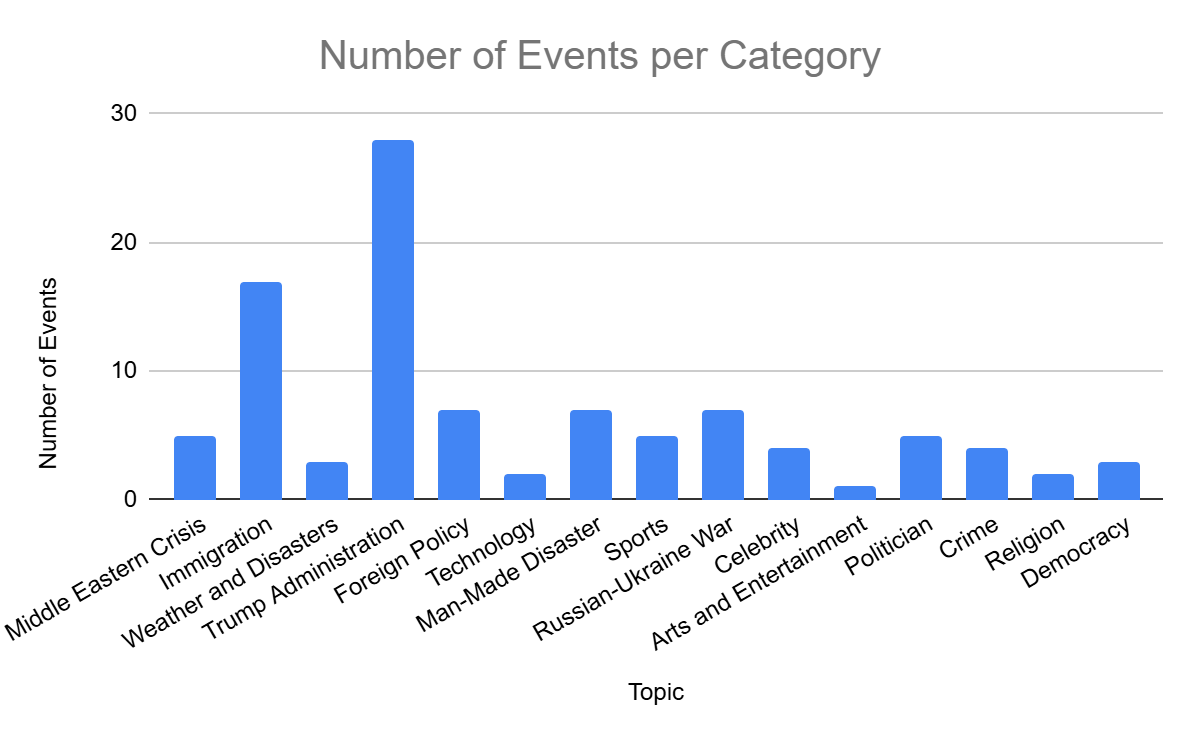Sanewashing in the media: the coverage that normalizes Trump’s bizarre behavior
By Delphine Gardiner
What is sanewashing? A term that has gained more traction in the upcoming election, sanewashing is when problematic statements by public figures are normalized or downplayed by the mainstream media. This practice is especially evident in mainstream media coverage, as pointed out by Margaret Sullivan, former editor of the New York Times in her recent article About those New York Times headlines, and we took a closer look at coverage which neutralizes Trump’s delusions while appearing to be more critical of Kamala Harris’s actions.
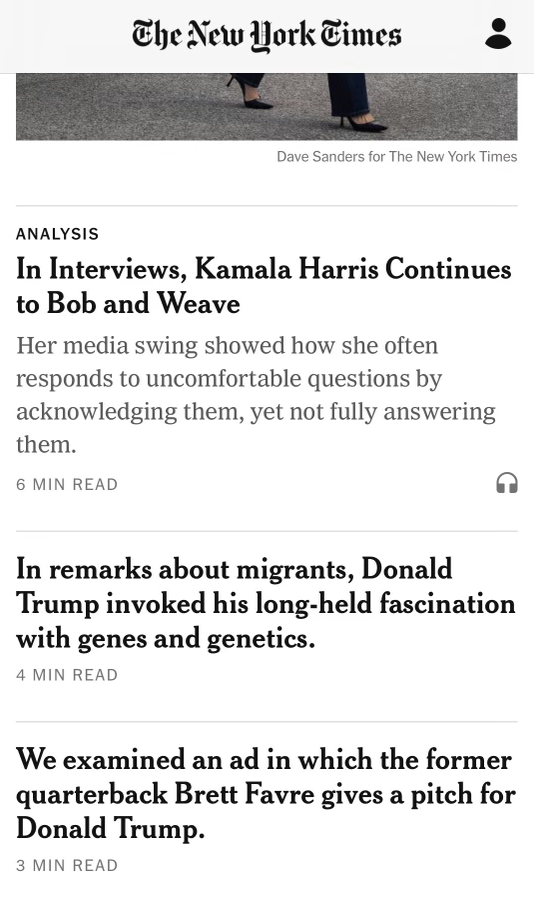
Addressing the top headline in Figure 1, “In Interviews, Kamala Harris Continues to Bob and Weave,” Harris’s behavior here is framed as evasive though her choice to stay on topic is common protocol for interviews with the media. The tone of the headline also subtly questions her competency and fitness for president, implying that her interview approach is indicative of her ability to make decisions as a leader.
Also, as asserted by Sullivan, some articles written on Harris are not really news nor typically covered by her male counterparts, often discussing and analyzing her body language at public events. Harris’s laugh is weaponized by conservatives, whereby some viewers of her debate with Donald Trump on October 5 suddenly became body language experts. Many commented that Harris was riddled with anxiety during the debate because of her facial expressions while continuing to ignore Trump’s “They’re eating the dogs” reference to Haitian immigrants or his inflating the number of immigrants entering the U.S.
Just below this headline of Harris is the contrasting headline of Trump: “In remarks about migrants, Donald Trump invoked his long-held fascination with genes and genetics.” This further illustrates that Trump continues to get away with his absurd statements about immigrants, rhetoric typical of his debates and rallies. Since then the headline has been changed to “Trump’s Remarks on Migrants Illustrate His Obsession With Genes” but still holds the same meaning as its original title. It deflects to a conversation on genetics, as if Trump’s racist comments are up to debate.
The disproportionate criticisms of both candidates is evident, whereby some stories of Kamala Harris are blown out of proportion as seen in headlines on her. And stories on Trump that are clearly negative are painted or sanewashed in a more neutral light, revealing bias in how Donald Trump is covered by the media in comparison to Kamala Harris.
These differences can also be seen in our Media Bias Detector Events dashboard, which displays a cross-comparison of facts for major news events. Interacting with this dashboard further shows how articles are framed differently for the same event and which outlets provide significant coverage of the event.
Trump’s rally at Madison Square Garden on October 27 was covered by multiple news outlets as seen here on the October 28 Events page.
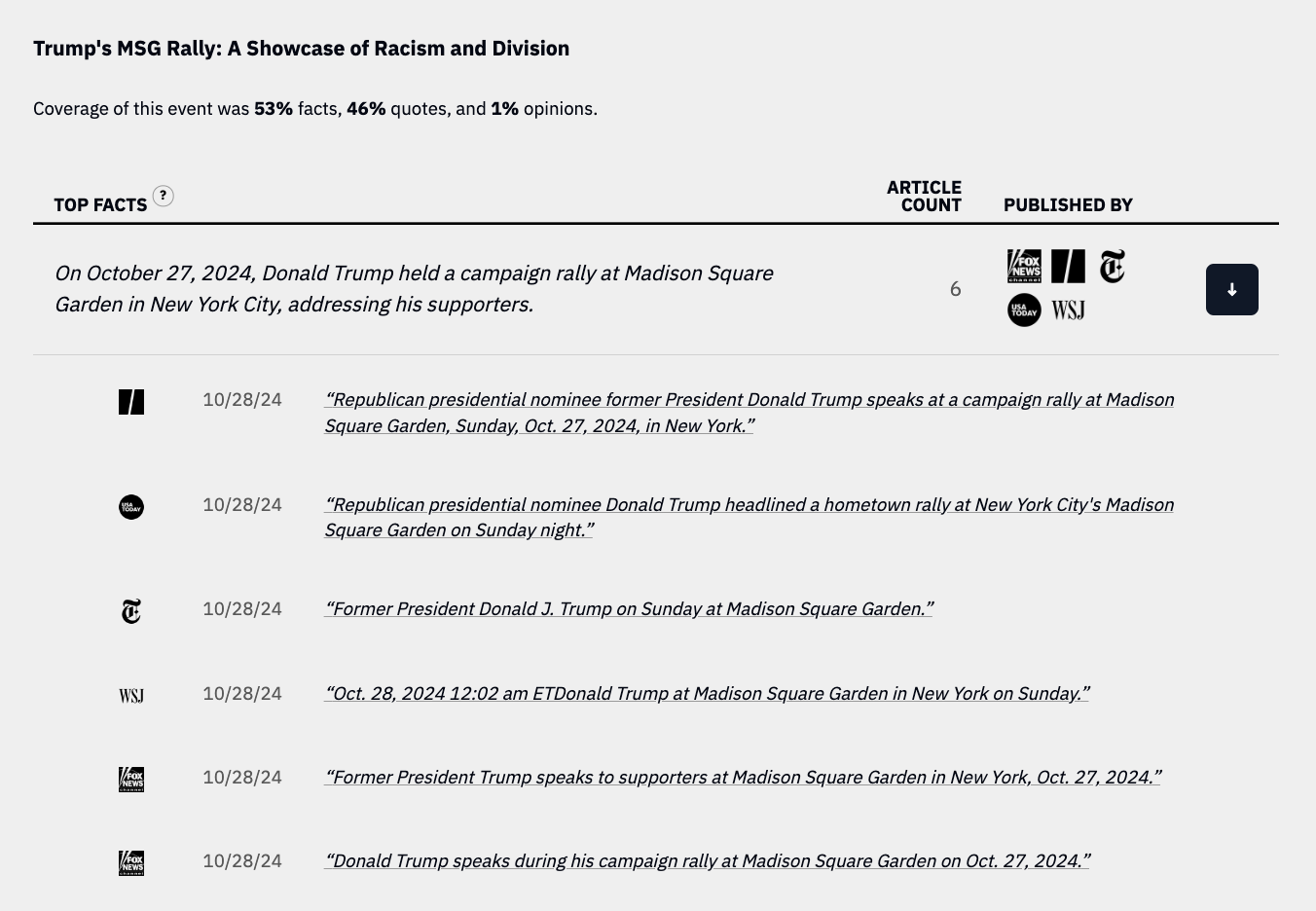
Clicking on each fact displayed takes you to the original article it is mentioned in. In contrast to the headline from the Huffington Post which calls out the racist and extremely offensive nature of the event, the following headlines from WSJ, NYT, and USA Today downplayed the event: WSJ refers to the racist remakes as “dark rhetoric,” NYT uses the euphemism of a “carnival” to describe the rally, and USA Today calls it a “closing campaign act.”
Donald Trump’s former chief of staff, John Kelley, called Trump a fascist and declared him unfit for president. This should have been a bigger news story but unfortunately it was not covered to the extent it should have, seen here in the Media Bias Detector Events page on October 23. In addition to headlines, a lack of coverage on Trump’s controversies could be another sign of the media’s normalization of his authoritarian tendencies.
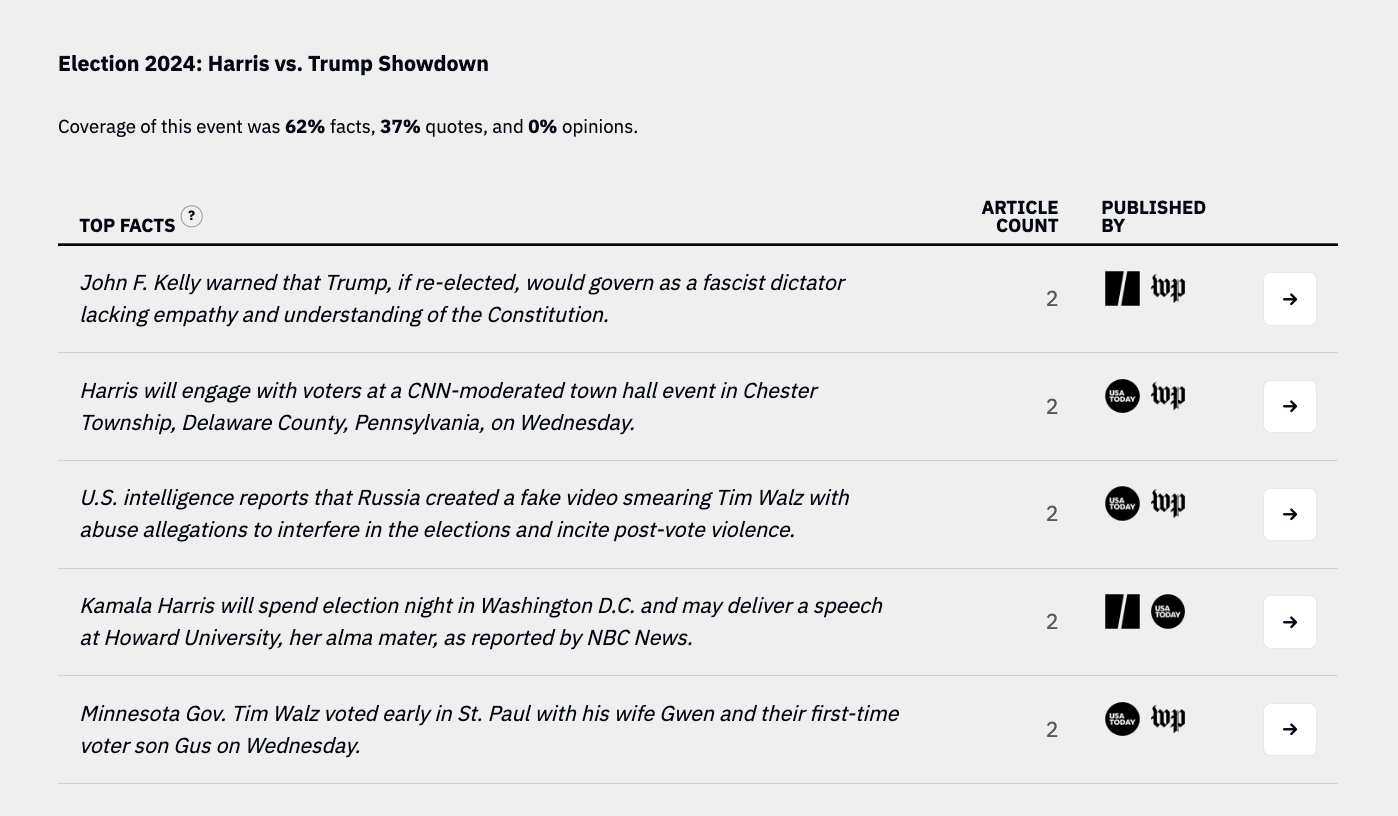
Why do we care about this? The headlines volume of coverage for news events reflects editorial decisions that should be questioned so readers can think more critically about how accurately the media is covering this presidential campaign. Downplaying harmful rhetoric and failing to cover the important stories does a disservice to readers, undermining accountability and public trust in the mainstream media. In seeing that there are still outlets dedicated to providing objective news and upholding democracy, we are reminded of the words of Ben Franklin, “A Republic, If You Can Keep It,” which today serves as a warning that protecting our democracy is an ongoing effort.
Note about methodology: To make sense of news events across multiple publications, the Media Bias Detector groups similar articles by theme, using AI to identify and title clusters based on shared content. It then highlights key facts from each event by summarizing the most common factual statements across articles, helping readers see which details publishers emphasize or omit. Only clusters with four or more articles appear on the Events dashboard, so while a publication may cover a story, it won’t appear unless four or more articles across the ten publications report on it.
